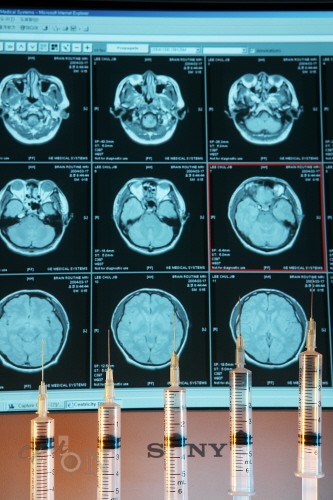
A certain netizen wrote an article to Im su-heuk online. These contents were that “you had brain death for 8 years. Give up.” Also, the press reported that Im su-heuk had brain death. However, these turned out to be false. In fact, he lived as a vegetable.
BRAIN DEATH
-No recovery: it means totally dead
-No ability to breath (If that, it would have been impossible to keep his life for 8 years.)
HUMAN VEGETABLE
-Recovery
-ability to breath: the brain stem has an ability to keep breath alive
-But, dynamic ability is dead.
Law (No. 5858) about organ transplant was passed in 8, February, 1998 with standard on brain-decision. So, brain death was recognized from 2000. However, people are still concerned and misunderstood in some parts. In fact, there were cases which people were confused to make decisions between brain death and euthanasia.
To be exact, death of people should be regulated as cell death. But, it was only possible after decaying a whole body, thus, application was impossible. Therefore, to make a faulty judgment, heart and lungs that had consideration ability to keep alive were considered as a point time of death. This was the standard until 1999. However, in medical science, brain undertook function on pulsation of heart, breath and blood pressure. Because of that, although lung and heart had no problems, they were stopped by brain’s stoppage. (it is brain death) Namely, people’s death was not the whole-death but process’s death that worked one after the other. So, there was a debate to decide point of a death. This debate was accelerated from advent of organ transplant. Organ transplant was became generalization by the University of Capetown’s heart transplant operation in 1967. Brain death did not keep alive until 2 weeks, although mobilizing all medicine technique. So, quick decision on brain death was needed for organ transplant. According to that, it was acknowledged.

+ BUT, ORGAN TRANSPLANT DECREASED ATFER LAW REVISION
According to KONOS, after brain death became legal, the rate organ transplant patients decreased due to intricate decision processes on brain death, shortage of merit to hospital on operations and misunderstanding on brain death. Joo ho-no, professor of the Korea University said “it was not efficient that a decision that was need quickness was undertaken from unanimity.” And “To effective way, first, medical specialist judged decision, after that, committee must take judgment.”
For such reason, revision of law was required. For example, person who had a mental disease did not contribute their organs with this decision as it was not done under a proper condition. But, if patient maintained a certain intension in lifetime, their opinions were accepted. (in present law, if a person is brain dead, contribution is not accepted regardless of his/her intention.
There was a second solution. In California, the organ contribution stickers were given to the people with driver’s licenses and to the people with willingness to contribute. The sticker was attached to a driver’s license. It was an easy way to find out the number of donations.
Organ contribution of an athlete, Yo-sam Choi, brought a huge impact on us. His story increased public opinion on revision of the law. His death was not empty.
Choi, Yo-Sam’s case = In the late 2007, Choi yo-sam, an athlete was drowned into brain death. His family agreed on organ contribution and six people obtained new lives. Success rates of transplant operation in Korea are the highest in the world. However, contribution rate is only 10% compared to that of the United States or Spain. On the other hand, his contribution brought a huge impact on donations as after his story was reported by the press, attitudes of families with brain dead patients had changed. If doctors could have persuaded more families with his case, they could have got more approvals.

